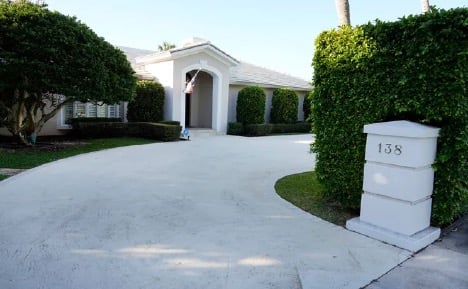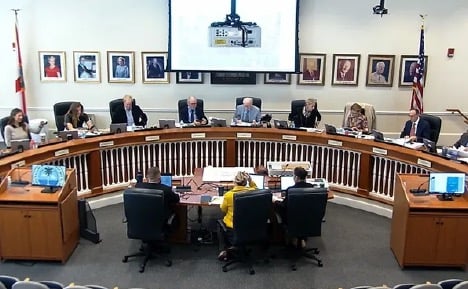British Colonial-Style House Earns Raves
PALM BEACH DAILY NEWS
8/19/20255 min read
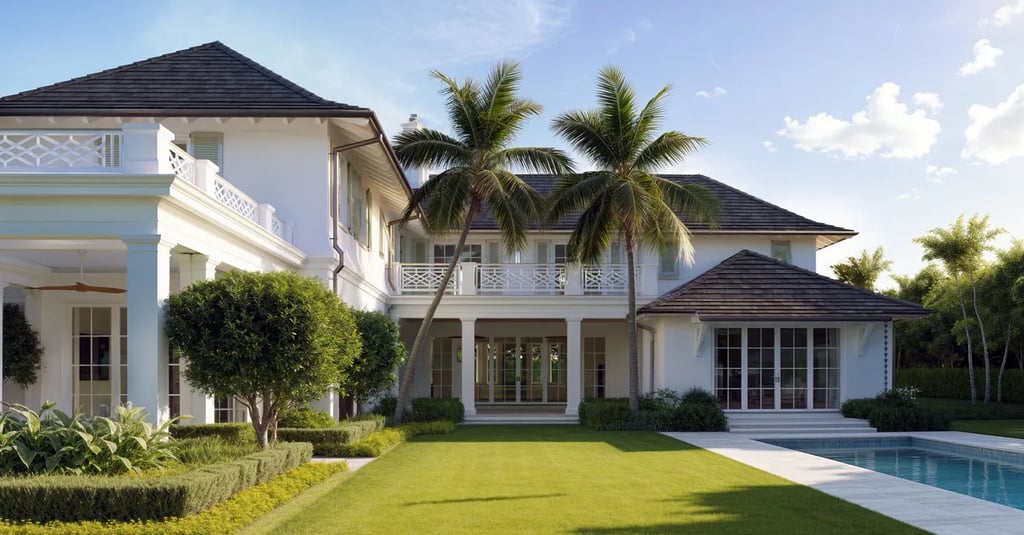

Design of British Colonial-style house earns raves from Palm Beach's architectural board
The Architectural Commission praises the design of a house and guesthouse expected to rise at 138 Barton Ave. in Midtown.
The Palm Beach Architectural Commission said the house was a finely detailed example of the British Colonial style.
The unanimous vote to approve the design was notable because commissioners were reviewing the house plans for the first time.
The design includes a six-bedroom main house and a single-story one-bedroom “accessory structure” in the backyard.
Over the past 20 years, clean-lined British Colonial-style houses have become increasingly popular in Palm Beach. The reason is simple: Many house-hunters and developers have sought alternatives to homes with heavily-ornamented Mediterranean-inspired architecture, which helped define the look of Palm Beach for decades.
Unlike Mediterranean-style houses, which traditionally have thick walls, relatively small windows and dark interiors, British Colonial-inspired architecture can easily adapt to the desire of homebuyers seeking open floor plans with light-filled rooms, high ceilings and abundant windows and glass doors. The style nods at the traditional architecture built by the English in their Caribbean territories beginning in the late 18th century.
Yet even with the style’s popularity, members of the powerful Palm Beach Architecture Commission have sometimes taken a dim view of houses in the British Colonial style, especially when the designs appear as lackluster white stucco-clad boxes and the exterior details are limited to window shutters — often blue — and a fretwork railing or two.
But that wasn’t the case recently when a house designed for 138 Barton Ave. came before the notoriously tough commission, which is tasked with approving new architecture in Palm Beach.
“I think this is one of the better-done houses in this style that we’ve seen in a long time,” Commissioner Elizabeth Connaughton told architect David C. Boettcher at the board’s July 23 meeting.
Vice Chairman Richard Sammons echoed the praise, mentioning that there were “lots of very good things about the house,” including its scale.
And during her remarks, Commissioner K.T. Catlin specifically thanked Boettcher, principal of Norwalk-Connecticut-based Shope Reno Wharton LLC.
“You did some beautiful little details that make a difference,” Catlin said, before she joined her colleagues in unanimously approving the design.
The vote was notable because commissioners were reviewing the house plans for the first time. The board frequently defers major projects after their initial review to demand designers restudy their work and return with changes.
The design Boettcher presented features a six-bedroom, L-shaped main house and a single-story one-bedroom detached “accessory structure” in the backyard. In all, the buildings would have about 7,200 square feet of air-conditioned space.
There would be another 1,000 square feet on the open-air covered porches and terraces — common elements of the original architectural style to provide shade from the harsh tropical and subtropical sun.
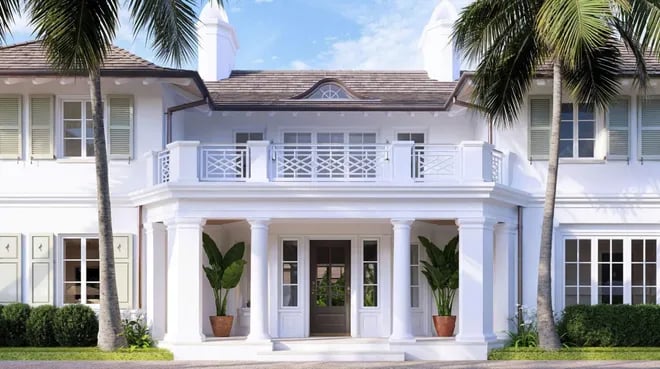

In the rear, the wings of the house would wrap around the swimming pool, with the outbuilding at the other end.
The British Colonial style and its variants go by several names, including West Indies style, Caribbean style and even the more generic “island tropical” style.
Boettcher described his house as “Anglo Carribbean” in style. He drew it up for the as-yet-unidentified family, with four children, that used a trust to buy their property in December for a recorded $10.5 million in an off-market transaction, courthouse records show.
The owners “really like the clean style of the Anglo Carribean houses,” Boettcher told the commission, although he did not identify his clients by name. He said the “clean, simple facade” of his design appealed to them.
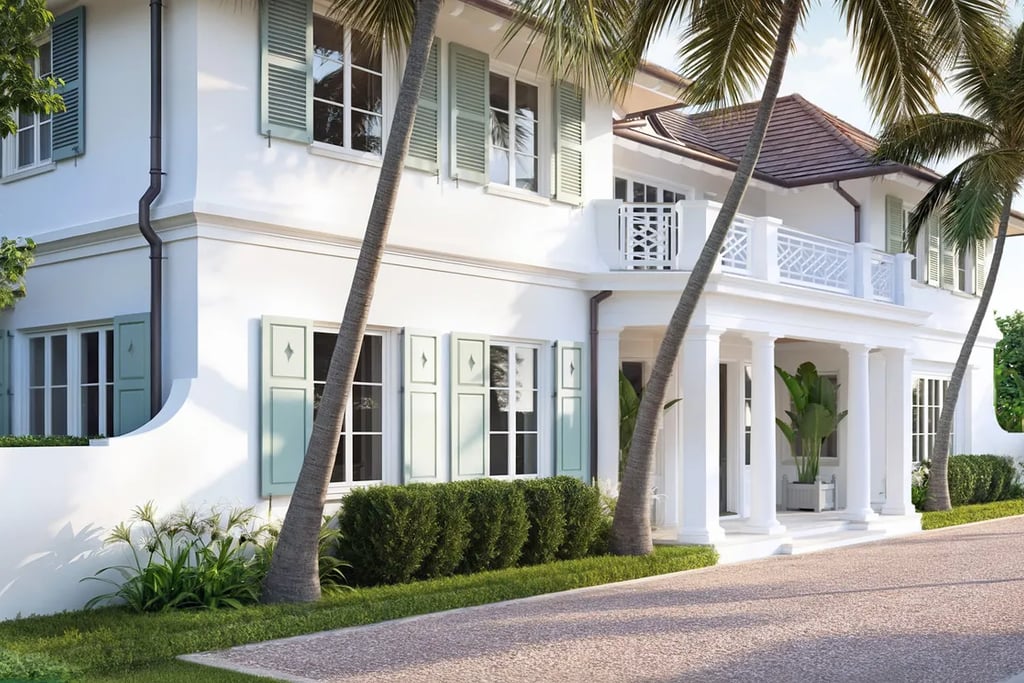

Sammons said the style of the house seemed to be rooted farther abroad in parts of the old British Empire. “It looks more like (buildings) in Sri Lanka or Singapore rather than Caribbean — (but) still British.”
If built, the house would replace a one-story house that has stood since 1961 in the ocean block of the Midtown street that borders the Episcopal Church of Bethesda-by-the-Sea. The lot measures two-fifths of an acre and is immediately west of Southways, a landmarked 1920s-era house with distinctive white exterior and two-story neoclassical architecture at 130 Barton Ave.
The project received letters of support from the neighbors who live on either side of the house, the commission was told.
Southways, in fact, helped provide architectural inspiration for the house Boettcher designed, he told the commission.
The exterior would be finished in white stucco with cypress details at the soffit and eaves. The roof would be covered in high-quality tiles — resembling wood — manufactured by the venerable Ludowici company of Ohio.
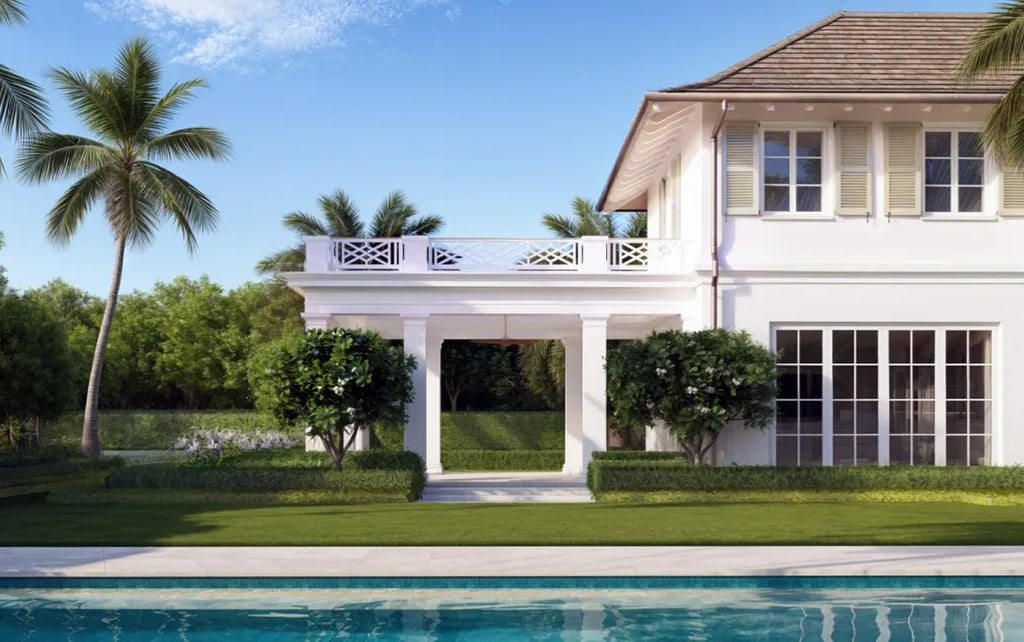

Other features would include soft-green shutters without louvers, fretwork railings on the terraces, painted cast-stone elements and Indiana limestone on the windowsills.
The same limestone would be found on the terraces and hardscape. The landscaping plan was by Fernando Wong Outdoor Living Design of Palm Beach.
Although Boettcher told the Palm beach Daily News he frequently designs houses in other parts of Florida, this is only his second project in Palm Beach.
As much as they liked it, commissioners did make a few suggestions to improve the project but their final vote did not specifically demand they be included.
Commissioner Claudi Visconti suggested giving a slight upward flare to the corners of the roof, a design sometimes seen in the Caribbean. Connaughton, meanwhile, said the roof overhangs appeared too wide.
Sammons wanted refinements made to the mullions that separate the panes of some of the French doors. He also wanted the design team to restudy the look of a wood gate; and to refine the details at the top of the two chimneys, which would feature the distinctive inverted-V-shaped cap found on many British Colonial-style houses to keep out rain.
Sammons ran the meeting in the absence of Chairman Jeff Smith. Because commissioners Kenn Karakul and Betsy Shiverick also were absent, the final decision to approve the project included votes from alternate members Kathy Georgas, Sue Patterson and David Phoenix.
To see more renderings of the house designed for 138 Barton Ave. in Palm Beach, click on the gallery near the top of this page.
Darrell Hofheinz is a USA TODAY Network of Florida journalist who writes about Palm Beach real estate in his weekly “Beyond the Hedges” column. He welcomes tips about real estate news on the island. Email dhofheinz@pbdailynews.com, call 561-820-3831 or tweet @PBDN_Hofheinz. Subscribe today to support our journalism.
